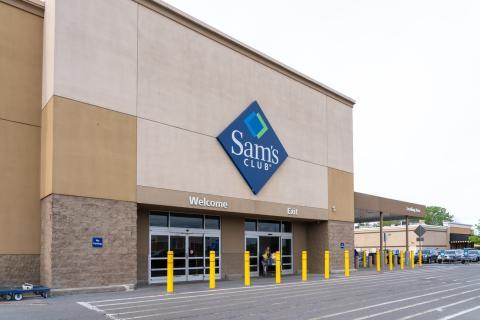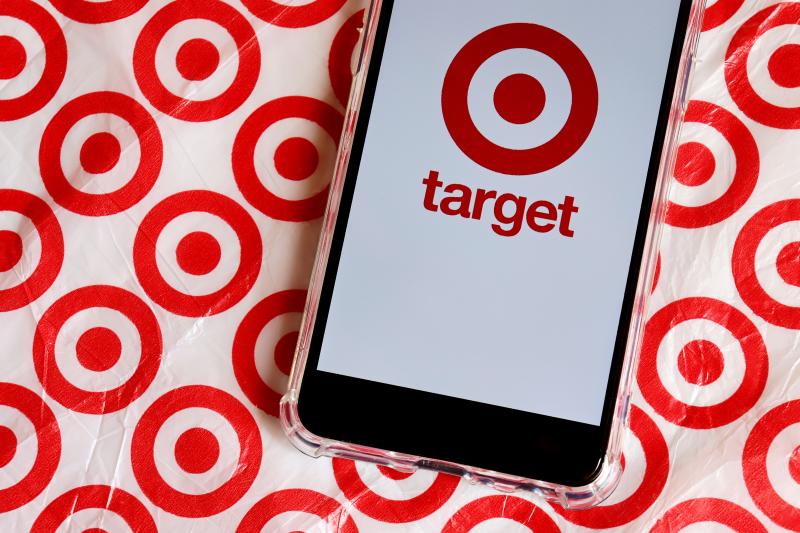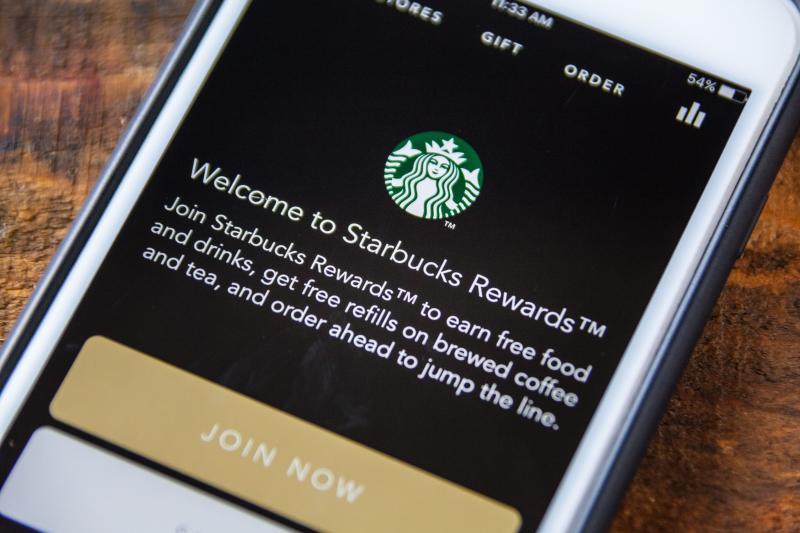Hottest Retail Loyalty Plans of 2023
If there’s one significant investment happening across the board in retail, it’s in loyalty. More and more companies are realizing the value of rewarding consumer engagement and interest, building out loyalty programs that go beyond the traditional, tiered approach — merging physical experiences with digital.
Today’s loyalty programs have utterly transformed, with some retailers tapping into innovative technologies like Web3 while others build an entire shopping ecosystem around their rewards programs.
Last year we recognized 10 leading retailers who are innovating within their loyalty offerings. Some of these companies are also being recognized here for their growing efforts in the space — Tractor Supply, Ulta, and Starbucks — but we’re also shining a light on new programs and unique loyalty approaches, alongside more established efforts that didn’t make the list last time around.
The Top Loyalty Programs of 2023
Sam’s Club
Number of people in the program: 69+ million members
Type of program: Tiered, paid subscription
Cost to join: $50/$110 yearly
Last year we highlighted Walmart on this list, which owns Sam’s Club. The company’s paid subscription model holds a lot of potential. In fact, according to “The Benefits of Membership: Mass Retailers and Subscription Services,” from PYMNTS, the Sam’s Club membership count is behind only Amazon Prime and Costco.
The company offers two subscription tiers: Club ($50/yr) and Plus ($110/yr). The base offering includes entrance into the warehouse, along with access to its Bonus Offers Program, tire battery center, and additional discounts. The more premium subscription includes add-ons like Sam’s Cash, pharmacy and optical savings, free shipping, and more.
With Sam’s Cash, members earn 2% back on qualifying purchases (up to $500 per year). With Bonus Offers, members can link their cards to unlock savings at eligible retail partners.
Sam’s Club did recently see a fee increase, according to Kath McLay, president and CEO. In a recent earnings call, McLay shared that it did not have an incremental impact on the membership’s renewal rate, particularly as the company offset the cost with a revisit of Sam’s Cash values.
“It’s meant that those members, because they get Sam's Cash available to them on the app, are becoming more digitally engaged with us,” said McLay.
According to recent earnings statements, membership income growth is now above 7%.
Target Circle
Number of people in the program: 100+ million
Type of program: Savings accrue based on the number of eligible purchases
Cost to join: Free
Target introduced its rewards program, Target Circle, in 2019, replacing Cartwheel. According to Brian Cornell, chairman and CEO, it quickly attracted 50 million users, proving to be “a powerful new asset for guest engagement, personalization, loyalty, and sales.” In an earnings report released in February, Cornell noted that since then, the Target Circle user base has doubled and continues to grow.
The company has built a connected loyalty ecosystem with Circle at the heart of it. Cornell said the rewards program served up three times more personalized offers in 2022, and members spent three times more, on average, this past holiday season.
Through Target Circle, members earn 1% in earnings rewards every time they make an eligible purchase with non-RedCard payment (Target’s credit card). There’s three ways to log earnings for in-store purchases: entering the phone number associated with the member on the keypad at checkout; scanning the Target Circle barcode in the Target app; or entering receipt numbers for items purchases within seven days at target.com/circle/dashboard or with the scan function in the Target App.
These earnings can be redeemed in-store or online. Additional benefits include 5% earnings with RedCard purchases, exclusive deals, a birthday gift, and voting eligibility to influence local charity efforts.
Ulta Beauty Ultamate Rewards
Number of people in the program: 40+ million
Type of program: Tiered, points accrue based on dollars spent
Cost to join: Free for base level, upper tiers have minimum spending requirements
Ulta made the list again this year for its impressive growth, reaching a recording-breaking 40.2 million Ultamate Reward members at the end of fiscal year 2022, according to earnings reports.
Per Dave Kimbell, Ulta’s CEO who shared insights during a recent call with investors, the company increased the number of active members in its program by more than 3 million members.
The plan largely remains the same as last year, where consumers earn points for every dollar spent, and they can opt into email and mobile notifications for bonus points offers. Additionally, to become platinum members, consumers must spend at least $500 annually, while diamond members have an annual $1,200 spend minimum. Ulta also continues to tap into the Target Circle ecosystem as well, giving consumers access to Target discounts.
A focus on digital innovation, however, may soon transform the program. The company shared that expansion plans are on the horizon.
“We plan to expand the power of our loyalty program by enhancing our media mix to acquire new members and elevate the loyalty program throughout our digital shopping experience,” said Kimbell. “We plan to leverage our analytics and data insights further to reactivate lapsed guests, increased retention, and shift share of wallet. And we intend to leverage our digital and physical assets to drive greater omnichannel member penetration.”
Starbucks Rewards
Number of people in the program: 30+ million 90-day active members
Type of program: Tiered, points accrue based on dollars spent
Cost to join: Free for base level, option to sign up for credit card
Appearing once again on our top loyalty list, Starbucks is keeping things interesting by introducing a virtual element to its membership offering. This past December, the company launched the Starbucks Rewards Odyssey experience in beta to select members.
Those who are participating in the Web3-powered initiative can earn and buy digital collectible stamps (NFTs) that will unlock access to new, immersive coffee experiences. The idea is to transform loyalty into an interactive experience with the community at the center.
As for Starbucks’ established rewards program, according to the latest earnings report, membership grew 15% in the U.S. and globally last quarter, with total membership transactions accounting for 56% of all business for the quarter.
“The experiential benefits that you've seen us out of the quarter were things like reward together, the Starbucks Odyssey program, and other special events — whether it's the opening of the Empire State Building and offering members the first chance to go and see a store like that,” said Brady Brewer, EVP and CMO, in a call with investors. “So we really try and add experiential benefits of the program to make people feel genuinely valued for being their Starbucks customer.”
Starbucks first launched its rewards program in 2008 with a simple punch card. Now with Starbucks Rewards, consumers can sign up for the rewards program at no cost at the base level. Earnings potential increases, however, for consumers who sign up for the Starbucks Rewards Visa Card.
Tractor Supply’s Neighbor’s Club
Number of people in the program: 28+ million
Type of program: Tiered, points accrue based on dollars spent
Cost to join: Free for base level, option to sign up for credit card
Continuing on the topic of loyalty transformation, Tractor Supply gets a mention for 2023 as well because of its expansion with Petsense, which launched the company into a new category for consumer engagement and retention.
Benefits under Petsense By Tractor Supply include free pet washes and grooming, as well as access to a wider selection of brands and supplies at Petsense by Tractor Supply locations. The company tapped into digital innovation by introducing “My Pet” within its app, providing a digital shopping experience through which members can connect with a vet for guidance and recommendations, and can order pet medications through a Tractor Supply Rx feature.
“On Petsense, the rebranding of Petsense, the Petsense by Tractor Supply, along with our expansion of our Neighbor's Club program to Petsense by Tractor Supply, is really resonating with our customers,” said Hal Lawton, Tractor Supply’s CEO, in a recent call with investors. “This expansion is allowing us to deepen relationships with existing customers in our enterprise and help attract new pet customers to both brands.”
The company also recently launched a Tractor Supply Visa credit card, which allows cardholders to earn additional benefits on their purchases. The company crossed over $1 billion in private label credit card sales last year.
Victoria’s Secret - VS & PINK Collective
Number of people in the program: Estimated 3 million
Type of program: Tiered, points accrue by dollar spent
Cost to join: Free for base tier
A newcomer to the list, Victoria’s Secret loyalty program is still in its infancy stages. The company just announced a pilot of the new program — The VS & PINK Collective — this past February. To start, the company is launching the rewards offering across 30% of its Victoria’s Secret and PINK customer base, with plans for a U.S.-wide rollout later in the year.
Sunsetting PINK Nation and expanding its credit card rewards, Victoria’s Secret will now be offering member exclusives, digital community features, and more, regardless of how consumers pay — though card members unlock additional perks. A new PINK app is also expected to launch ahead of the full scale rollout, providing members a digital space for peer-to-peer interaction and innovative tech features.
The tiers include Insider (base, no spending minimum), All-Access (spend $300 or more annually), and VIP (spend $750 or more). Credit card holders earn points at a faster rate and are automatically enrolled at the All-Access tier.
Points can be redeemed for rewards, and members also receive a $10 birthday gift, free shipping for eligible online purchases, early access to select product releases, double points days, and more.
Martin Waters, CEO of Victoria’s Secret, said during the company’s last earnings call with investors, that it’s too early to declare victory on the program, but the company is “super energized by it and take-up has been good.”
“We should be at about 3 million people in the system by the end of [March],” he said. “So, there's a sizable body, sizable community that is going to benefit from this program.”
- Amazon — Where Are They Now?
Retail loyalty can be fickle, particularly amid a difficult environment. For example, while mammoth retail marketplace Amazon made the list last year for having one of the largest loyalty membership counts — and the overall segment does continue to grow (now at over 200 million globally) — data shows its U.S. numbers are down.
According to Insider and estimates from Consumer Intelligence Research Partners (CIRP), Amazon ended last year with 168 million Prime members in the U.S., down from 170 million at the end of 2021. This is the first time that the company generated no annual Prime growth in its largest market, per CIRP.
However, Brian Olsavsky, chief financial officer at Amazon, shared during the company’s last earnings call, that while membership does vary by geography, “Prime membership remains strong and so has the dollars purchased per Prime member.”
Loyalty Insights
How has loyalty changed over the last year? As many shoppers face economic hardship, loyalty isn’t as strong as it once was. In fact, according to research by marketing platform Blackhawk Research, as of July 2022, 25% of consumers said they were spending less on the brands they usually buy from.
It is especially difficult as more and more retailers introduce loyalty programs as a way to better connect with their audience. This is creating a glut in the market, and not all offerings stack up. According to McKinsey & Company, on average, a U.S. consumer belongs to 17 loyalty programs, and engagement is low with less than 50% actively participating.
According to Garter, there’s an increasing focus on the supply chain — both from the end-consumer perspective and from a retailer’s point of view. Consumers demand expedited delivery, while retailers are heavily investing in fulfillment technology to overcome economic and environmental challenges.
Per Gartner’s Consumer Priorities 2022 Survey, shipping benefits make up the third most preferred loyalty benefit that consumers want from brands. More consumers are paying attention to on-time delivery, stock-outs, accurate order fulfillment, convenient returns, and more. McKinsey & Company reports that 50% of consumers said they will switch product, brand, or retailer when faced with shortages.
Retailers seem to recognize the building crisis. In fact, RIS’ 2023 Retail Technology Study found that 19% of retailers are investing in technology to accelerate fast, flexible shipping and fulfillment capabilities.
“Understanding customers’ needs and expectations for their service experience is integral for improving loyalty and creating customer value, especially when organizations are up against economic headwinds,” said Jonathan Schmidt, senior principal, advisory in Gartner’s customer service and support practice, in a statement. “Executing on this vision requires investment in customer data and analytics, knowledge management, and an enduring partnership with IT.”
According to a blog from Debrup Jana, senior director analyst at Gartner Supply Chain, a successful loyalty program relies on personalization, creating frictionless unified commerce experiences, and aligning with the values of consumers.
Key Takeaways
-
Consumers are focused on cost savings in order to balance their budgets against skyrocketing inflation. Retailers need to keep subscription pricing and discount models low to better resonate with today’s wallet-conscious consumers.
-
Getting products to consumers quickly and efficiently, and without sacrificing quality and cost, should be a top priority. This may mean investing in supply chain innovation in order to boost loyalty retention.
-
Digital is more intertwined into the loyalty experience than ever before. Retailers should strongly consider whether their current offerings are up to par to what competitors are offering, especially as more brands dip their toes into the metaverse, Web3 experiences, interactive apps, and more.
-
Even the biggest membership providers are at risk of losing out on valuable, high-spending customers. This environment gives small- and mid-level retailers the opportunity to catch up and make a name for themselves in contrast to high-budget companies despite the volatile landscape.











